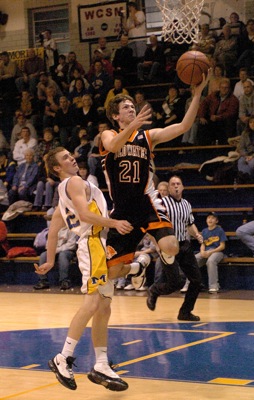Wednesday, December 19th, 2007
St. Marys-based ready mix company going green
By Nancy Allen
A local ready mix company is trying to green up its business after one of its officials attended the Greenbuild 2007 conference held in Chicago.
Representatives of Quality Ready Mix of St. Marys attended the annual event that showcases products, materials and building techniques that are kinder to the environment and conserve natural resources.
The idea of environmental responsibility in the construction industry seems to be catching on, according to Teri Hirschfeld, vice president and director of business development at Quality Ready Mix.
"I was shocked with the scale of this. It started five years ago and they had about 2,000 people attend. This year there were more than 20,000, including people from all over the world ... this is something big," Hirschfeld said.
Hirschfeld's grandfather and great-uncle, Herb and Elmer, started the business, then a sand and gravel company, in the early 1920s. The Ready Mix portion of the business was added in 1949. After the recent death of Hirschfeld's father, Robert E., she now runs the business with her brother John, who acts as president. Hirschfeld moved back to Wapakoneta from San Diego, Calif., in 2006 to help run the family business.
The company has ready mix plants in St. Marys, Lima, Fort Shawnee, Wapakoneta and Bluffton, a stone quarry in St. Marys and a sand and gravel plant in Wapakoneta.
Through the visionary thinking of her brother, who she affectionately refers to as "the mad scientist of concrete," the company already has begun using some green techniques of its own to make a cheaper, stronger concrete.
About 15 years ago, Hirschfeld's brother and father started experimenting using flyash in place of cement in its concrete mixes. Concrete is normally a mixture of stone, sand, water and cement. Flyash is a powdery waste product that comes off scrubbers at coal-fired electrical plants.
The company began experimenting with slag in 2004. Slag is a talcum powder-like material that is a byproduct of the steel industry.
Both slag and flyash are byproducts that were considered trash and disposed of in landfills for many years.
"Slag has become so valuable to the concrete industry that steel companies are going back into landfills and digging it up," Hirschfeld said, adding that the business uses mixes that replace up to 50 percent of cement with a combination of slag and/or flyash.
Hirschfeld said test results show the concrete produced from using flyash and slag is stronger than cement only.
The main environmental benefit of using flyash and slag is that less cement needs to be produced; the production of cement results in large amounts of greenhouse gases, widely believed to contribute to global warming.
"So not only can we use this environmentally good thing, we can keep costs down because we can get flyash and slag less expensively than cement," Hirschfeld said.
Another green technique the company hopes to begin offering is pervious concrete, she said. This type of concrete allows water to drain through it, yet withstand freeze/thaw effects. It can provide environmental and economic benefits when used in the appropriate cases and can negate the need for detention/retention ponds in commercial development projects, she said.
Three managers from Quality Ready Mix in July attended a seminar and demonstrations on the product. The company already is getting calls from contractors interested in using it and plans to offer training session on installing pervious concrete.
The application could be used in developments near lakes and rivers to lessen runoff from driveways, parking lots and other large, flat paved areas, Hirschfeld said. The application has been used extensively on the west coast and it is just now getting here.
Quality Ready Mix also is looking into using foundry sand from local foundries. The sand is used in the aluminum and steel molding process and ordinarily would be considered waste.
Another product the company is looking into is insulated concrete form walls, which are thick walls of Styrofoam and concrete. The styrofoam walls are erected and the concrete is poured inside.
The big advantage to this is the significant savings in heating and cooling costs because they the walls are highly insulated. This has become the building method of choice in Canada due to the energy savings, Hirschfeld said.
Aside from the cost savings to the company and customers, pursuing green techniques is the right thing to do, Hirschfeld said.
"We think it's ultimately right for our customer and if it's right for them, it will be right for our business."
LEED program getting attention:
A program that helps guide the construction of green buildings is becoming more popular as industry leaders learn the importance of being environmentally aware.
The Leadership in Energy and Environmental Design (LEED) Green Building Rating System is a program encouraging the global adoption of sustainable building and development practices that are friendly to the environment. The program is driven through the creation and implementation of universally understood and accepted tools and performance criteria, the LEED Web site states.
More and more institutions are requesting services from contractors who have experience with LEED and constructing green facilities, said Quality Ready Mix President John Hirschfeld.
"The LEED and the green stuff has really taken off in the last four years," he said. "More and more you hear that, 'oh, that's a LEED project,' " he said.
Quality Ready Mix provided concrete for a recent huge expansion at St. Rita's Hospital in Lima, a LEED project, he said.
State and local governments across the country are adopting LEED for public-owned and public-funded buildings to obtain initiatives in federal agencies, including the Departments of Defense, Agriculture, Energy and State. LEED projects are in progress in 41 different countries, including Canada, Brazil, Mexico and India, the Web site states.
- Nancy Allen

